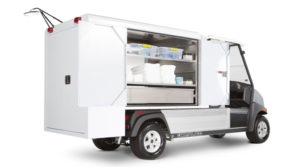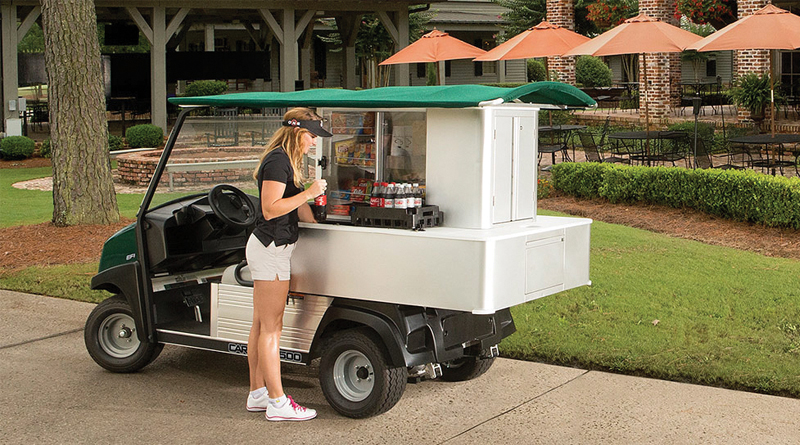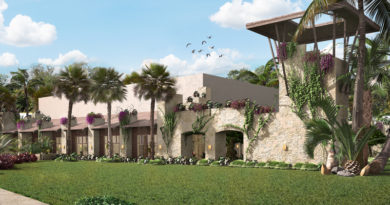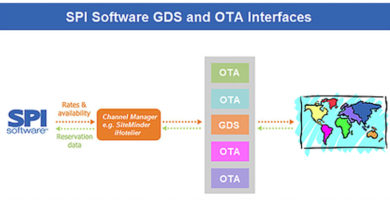Utility Vehicle Fleet Planning: Avoid These 9 Costly Mistakes
From flawless facilities to well-groomed grounds … from immaculate housekeeping to efficient food service to reliable transport, you’ve got a lot riding on your fleet.
Your fleet drives guests’ satisfaction and boosts your identity, yet timeshare resorts often neglect the planning needed to forge a cost-effective fleet and a comprehensive transportation strategy. Instead, they fall victim to common fleet-planning mistakes that take a bite out of their investment.
Steve Bledsoe, a Transportation Solutions Expert with Club Car has worked with scores of timeshare resorts and shares these tips on what to avoid when planning and purchasing your fleet.
1. Don’t be short-sighted. Look at the big picture and move toward a comprehensive transportation strategy and single-source supplier. That requires a transportation partner who offers not just vehicles but also fleet planning expertise.
Club Car’s sales professionals will audit your current fleet—department by department and vehicle by vehicle—and help you create a comprehensive transportation strategy. This allows you to build risk management into your fleet from day one, streamline fleet management downstream, and prepare for day-to-day tasks and long-term projects.
Working with a single partner with a focused transportation approach also sustains your brand by creating a uniform look and providing the right type of vehicle for each task.
2. Don’t create needless chaos. Buying vehicles from a variety of vendors complicate virtually every aspect of fleet management for years to come. Buying from a single vendor who can meet your every need is a smarter option. It simplifies maintenance, training, parts inventory, safety compliance, charging and warranty issues. It also gives you a single point of contact when you need support.
3. Don’t play around. Many vehicles sold into commercial markets like timeshares are actually recreational vehicles. They lack the strong suspension systems needed for heavy work and load pulling. Instead, their suspension systems are built for high speed, which is risky on work sites. Look for vehicles that are purpose built for work, with semi-independent rear suspension systems designed for loads as well as long-lasting frames and beds.
4. Don’t think all utility vehicles are the same. They are not. But financial and purchasing personnel, who don’t actually use work utility vehicles, may not understand the possibilities well-built utility vehicles offer. Indeed, they may see utility vehicles as nothing more than golf cars with boxes on the back.
In reality, there are huge differences in various models. The best vehicles can replace more expensive pickup trucks in many jobs.
“It makes all the difference in the world to partner with a single utility vehicle supplier like Club Car that offers a great product and a high level of fleet management expertise. For us, it has resulted in a complete culture change that has improved efficiency and safety and cut costs. Our employees now take pride in the vehicles they drive and know how to care for them.” – John Cedillo, General Manager Hawks Cay Villas, Marina and Resort
5. Don’t buy based on price alone. Many factors affect the total cost of fleet ownership, including build quality, fuel usage, ease of maintenance, warranties, and availability of parts and service. Gasoline vehicles with easy-to-service engines with electronic fuel injection (EFI), like those in Carryall utility vehicles, can get twice the mileage as some major competitors. Electric vehicles with 500-amp controllers have higher bed capacity, reducing round trips and cutting costs, compared to those with less powerful controllers. Take these factors into account.
6. Don’t let rust destroy your investment. Many utility vehicles are built on steel frames that tend to rust. Although their manufacturers may position the steel frames in a positive light, water, fertilizers, and salt can eat right through steel frames, even if the frames are coated. The coating is generally not applied evenly or to the underside of the frame, allowing rust to take hold. Aluminum frames generally last much longer and can resist impact better than steel frames if well designed. They are also much lighter than steel frames, which reduces turf compaction and increases range.
 7. Don’t underestimate accessories and customization. Timeshare resorts use utility vehicles in many applications, and accessories, customized and specialized vehicles, can often cut costs considerably. Look for a vendor with an extensive portfolio of commercial accessories and a proven custom solutions department. Club Car offers all that and a new series of vehicles designed for specific applications. Known as our Fit-to-Task Series, they include food service vehicles, housekeeping vehicles, facilities engineering vehicles, ground maintenance vehicles and more.
7. Don’t underestimate accessories and customization. Timeshare resorts use utility vehicles in many applications, and accessories, customized and specialized vehicles, can often cut costs considerably. Look for a vendor with an extensive portfolio of commercial accessories and a proven custom solutions department. Club Car offers all that and a new series of vehicles designed for specific applications. Known as our Fit-to-Task Series, they include food service vehicles, housekeeping vehicles, facilities engineering vehicles, ground maintenance vehicles and more.
8. Don’t discount leasing. There has been a dramatic increase in leasing utility vehicle fleets over the last few years, yet many timeshare resorts don’t understand the benefits of leasing. Leasing preserves your operating capital because it requires no down payment. Monthly lease payments may be considerably less than loan payments, and lease payments may be tax deductible. Also, leasing lets you get a new fleet every three to four years, keeping your vehicles under warranty much of the time. Ask your sales professional to prepare both lease and purchase options for your consideration and discuss this with your financial and tax team.
9. Don’t neglect the Internet of Things. It’s coming to timeshare resorts, and fast. Take, for example, Club Car’s Visage® Resort Edition. Its cloud-base connected technology lets you monitor and manage fleets used for guests transport across your property.
Based on the latest GPS and touch-screen technology, it offers on-screen messaging, two-way communications, distance to the next location, brilliant 3-D graphics of the resort and more. You can also promote specials and events, and advertise resort properties for sale. You can set the system so that information on a home that’s on the market pops up when a vehicle nears that property.
The system also features real-time diagnostics and car control on electric models. This lets resort know where their cars are at all times, set geographic fencing and lock down a single car or the entire fleet.
Closing Thoughts
Investing time in fleet planning, working with a single supplier with Transportation Solutions Experts, and building a comprehensive transportation strategy helps you prevent many fleet problems, improve the reliability of your fleet, and boost guests satisfaction.
Get A Free White Paper on Transportation Planning
Download our free white paper — Building a Comprehensive Transportation Strategy for Your Resort: A Four-step Plan to Improve the Return on Your Investment



